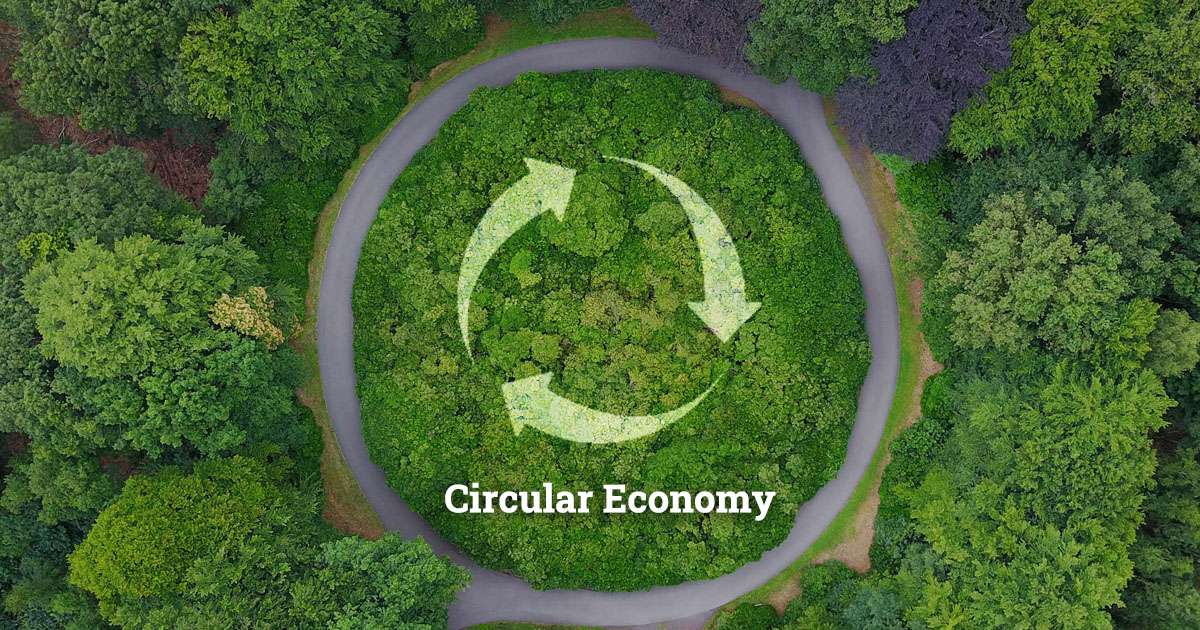The circular economy is gaining popularity, especially in the technology sector. The circular economy extends the life cycle of products and reduces waste, a radical departure from the linear “take, make, throw away” model. It involves developing technologies that are repairable, reusable,, and recyclable. The circular economy aims to close loops and maximize the use of resources. This approach reduces environmental impact, supports sustainable development, and ultimately benefits the planet and the economy.
Why the Linear Model is Unsustainable
The linear economic model in technology production exacerbates the e-waste dilemma. Millions of tons of electronics are thrown away each year, much of which ends up in landfills or incinerators. Discarded rare earth metals and hazardous substances pollute the environment. Rapid innovation and targeted obsolescence have led to short life cycles for modern electronics, making linear waste management virtually impossible. A circular, sustainable approach to the production and use of technology is therefore necessary.
Fundamentals of a Circular Technology Economy
The circular economy in technology involves designing for durability, product repair, reusing components, and recycling materials after use. These philosophies promote the reuse of resources in the economy. Technology companies are rethinking product design to make devices easier to disassemble, repair, and upgrade. The circular economy reduces the environmental impact and resource use of technology by focusing on the lifespan of devices and the recovery of resources.
The Role of Design in Circular Technology
The circular economy in technology revolves around product design. Designs should make devices easier to repair and replace. Screws and modular components are preferred over glue or solder, which make disassembly difficult. Many companies now design computers, smartphones, and other electronic devices with modularity in mind, allowing users to replace parts instead of the entire device. Well-designed products last longer and are easier to recycle.
Repairability and Upgradability are Key
The lifespan of technology products depends on repairability. The circular economy treats device repair as a natural part of ownership. Companies are increasingly offering repair manuals, spare parts, and support for customers and technicians. Upgradeable devices allow consumers to improve performance without buying a new system. Upgrades to laptop memory and batteries can extend life by years. These approaches can reduce e-waste, save costs, and increase technology adoption.
Recycling and Reusing Technology
In the circular economy, recycling is crucial when products cannot be repaired or reused. Electronics are rich in gold, silver, copper, and rare earth metals. Recycling can effectively reintroduce these materials back into the industrial cycle, reducing labor-intensive and environmentally damaging extraction of new raw materials. To reduce the loss of raw materials when disposing of devices, new recycling methods are being developed to increase the yield and purity of materials.
The Role of Used and Remanufactured Electronics
Refurbishing and selling used electronics is another part of the circular economy. Discarded devices can be cleaned, repaired, and sold to others, extending their lifespan. This reduces the impact on the environment and makes technology more affordable to more people. Many organizations and companies offer certified, high-quality remanufactured products, providing consumers with a reliable and sustainable solution. Supporting used electronics can promote recycling of items and reduce waste.
Supporting Business Models
Tech companies are changing their business strategies to embrace the circular economy. Product-as-a-service, where consumers lease or subscribe to devices, is a popular model. This strategy incentivizes manufacturers to produce durable, repairable products because the company is responsible for maintenance and disposal. Recycling, trade-in, and buyback programs are also used to recycle or remanufacture obsolete devices. These strategies benefit companies and customers while improving sustainability.
Consumer Awareness and Its Impact on Circular Tech
Consumer behavior is driving the success of the circular economy in the technology sector. As environmental awareness grows, consumers are demanding sustainable products and transparent supply chains. People are paying more attention to how their electronics are produced, how long they last, and what happens to them after use. As a result of this shift in awareness, demand for circular products has increased significantly. Sustainable companies are gaining brand loyalty and market share, proving that conscious consumption can make a difference.
Tech Companies Leading the Way in the Circular Economy
Top tech companies have already started implementing the circular economy. These companies are making modular devices, using recycled materials, and recycling outdated technology. Some have committed to being carbon neutral and using 100% recycled or renewable raw materials. These efforts have proven to the industry that circular economy ideas can go hand in hand with profitability and creativity. Scaling these solutions and making them effective will require a concerted effort across the tech sector.
Barriers to Circular Economy Implementation
While there are many benefits to a circular economy in the tech sector, there are also barriers to widespread adoption. These barriers include the complexity of modern devices, a lack of standardization, commercial incentives for planned obsolescence, and inadequate recycling infrastructure. Lack of awareness and consumer habits can also pose barriers. Manufacturers, governments, and consumers must work together to overcome these issues. Innovations in materials research, product design, and recycling technologies will help overcome these challenges and make circular economy practices more viable and scalable.
Conclusion
The circular economy in innovation is a crucial shift towards a more sustainable and responsible future, not just a slogan. As demand for electronic products increases, we need to rethink how we produce, use, and dispose of them. Circular strategies can save resources, reduce waste, and lower the environmental impact of technology. The IT sector can contribute to a greener, more circular world by embracing repairability, recycling, and new business models. This requires the commitment of all stakeholders, but the long-term benefits for the planet, economy, and society are clear.
FAQs
1. What is the circular economy in technology?
The circular economy in technology involves creating, using, and managing technology products to reduce waste and maximize reuse, repair, and recycling.
2. What is the positive impact of the circular economy on the environment?
It reduces e-waste, CO2 emissions, and resource consumption by extending the life of electronics and recovering valuable materials.
3. Repairability is key in circular technology. Why?
Repairability extends the life of electronics and reduces waste and product replacement, which is crucial for sustainable development.
4. How can consumers contribute to the circular economy?
Buy refurbished products, dispose of old products responsibly, and buy sustainable, repairable devices.
5. Are IT companies moving towards the circular economy?
To support the circular economy, some well-known technology companies are using recycled materials, offering take-back programs, and designing devices that can be repaired and reused.




